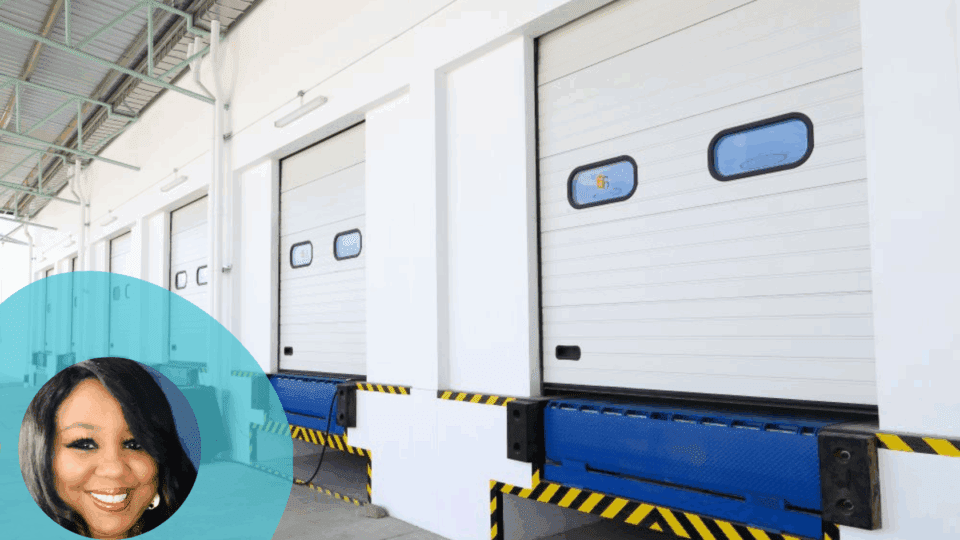Loading docks are the unsung heroes of retail operations — until they’re not. You don’t think about them much until they go down and suddenly nothing’s coming into your store. Then you need to fix them real fast, and “real fast” often means weeks of downtime and hundreds of thousands in lost inventory.
After 23 years in the industry managing programs for major retailers, I’ve seen this scenario play out countless times. Retailers operate on a “we’ll fix it when it’s broken” mentality because they’re so focused on getting product on shelves. But they miss a crucial piece: what happens when that equipment actually goes down?
Here are five strategies that successful retailers use to keep their loading docks running smoothly and avoid costly disruptions.
1. Stop the cycle of reactive repairs. Most retailers I work with have traditionally operated on an ad hoc model — something breaks, they get a work order, we fix it. It’s a cycle that feels efficient until you do the math.
I use this analogy with clients: Do you change the oil in your car every time the sticker tells you to? That simple maintenance keeps your car viable, helps it run well and actually saves other parts of your operating vehicle. If you don’t change your oil, you might need a motor replacement.
The same principle applies to your loading dock equipment. An hour of preventative maintenance that you don’t perform can turn into a dock that needs complete replacement with a four- to six-week lead time. You’ve taken what should have been a one-hour repair and extended it to a six-week problem simply because you skipped the maintenance.
2. Understand the true cost of downtime. Here’s the question that finally got traction with one major nationwide retailer: If you don’t have your dock available for an hour, how much product sits on a truck that you can’t get into the store? Maybe it’s $1,000, maybe it’s $10,000.
Let’s say it’s $1,000. Now multiply that by 24 hours a day times six weeks. You’ve taken your $1,000 and suddenly you’ve got $200,000 worth of product not making it to your shelves — all because you didn’t do a preventative maintenance check.
This is your last mile we’re talking about. Whether it’s a distribution center moving product to stores or stores receiving inventory directly from distribution centers, the loading dock is that final critical step before product reaches your customers. The equipment operates the same way, the process is identical — the only difference is the end user.
3. Focus on the Critical Four: what actually needs attention. When we talk about preventative maintenance for loading docks, there are four key areas that demand attention:
The dock leveler itself is obviously the most important component, along with any restraints — the equipment that locks into the trailer and keeps it in the bay. This is a critical safety measure, and a lot of accidents that occur are due to safety issues that can easily be prevented by preventative maintenance and daily equipment checks.
Clean-out underneath the bay is essential but often overlooked. If you have a hydraulic unit that’s electrically operated and there’s trash like wood and paper underneath the bay, an overheated motor can cause that debris to catch fire. I’ve seen damage to motors, pumps and interior components of levelers because of this preventable issue.
Oil levels and hydraulic systems need regular attention. Hydraulic levelers have oil in reservoirs for their motor pumps. When oil is low, the dock operates slower, making it harder to level into trailers and slowing down your entire unloading process. Eventually, it will completely fail, putting you in a situation where you’re replacing a motor with a one- to two-week lead time and dealing with downtime when you can’t get product in the store.
Don’t forget pivot points and hinges. In places with harsh weather, these components tend to rust faster because they’re exposed to the elements. Snow melting creates rust, and when you have rust, your leveler struggles to open. You can go from needing a simple hinge replacement to requiring a new lip or other costly components — all because you didn’t lubricate your pivot points to ensure the mechanics operate as designed.
4. Create a smart maintenance schedule. The most important thing to understand is that each manufacturer has maintenance guidelines that go with their equipment — no different than your car telling you when to perform specific maintenance based on time or usage.
Whatever the manufacturer states should be your baseline. These recommendations come from teams that have performed field studies and determined what’s needed in various environments to maintain equipment for its expected longevity. Some manufacturers will tell you their equipment should last 10 years if you follow specific maintenance guidelines.
For dock levelers specifically, usage frequency should determine your maintenance schedule. If you’re in a location with high freight volume but only two levelers, you’re using those levelers way more than a location with low freight and the same number of levelers. High-usage locations may require more frequent preventative maintenance to ensure you don’t have equipment down.
At minimum, all equipment should undergo preventative maintenance at least once a year. In colder climates, it’s important for hydraulic levelers to be reviewed during winter months. In places like Seattle or Alaska, hydraulic oil can freeze or congeal, making it difficult to operate the leveler and eventually leading to motor and pump failure.
5. Prioritize safety — compliance follows naturally. Safety should be your primary concern, and everything else follows from there. A lot of accidents occur due to safety issues that can easily be prevented simply by preventative maintenance and daily walks and checks on equipment.
When you maintain equipment according to manufacturer specifications, OSHA compliance becomes a natural byproduct. Regular maintenance creates safer work environments and protects your team from preventable accidents. The documentation matters too; when there’s an incident, the first question that gets asked is: “When was this equipment last serviced?” Being able to demonstrate that your equipment is serviced and maintained per manufacturer specs helps protect both your employees and your organization.
Getting preventative maintenance right requires an upfront investment that many retailers resist. But the data shows that by year two, you’re maintaining equipment instead of replacing it, which reduces your capital spend significantly.
The retailers that understand this aren’t just saving money — they’re ensuring that their last mile doesn’t become their weakest link. In retail, where every day without product on shelves is revenue lost, your loading dock isn’t just infrastructure. It’s your lifeline to keeping customers satisfied and your business running smoothly. The hour you invest in preventative maintenance today saves you weeks of crisis management tomorrow.
Anita White is Senior Director-Service Delivery at TrueSource, partner to more than half of the U.S. top 100 retailers nationwide and the first call for retailers and property managers in need of critical facility maintenance.




